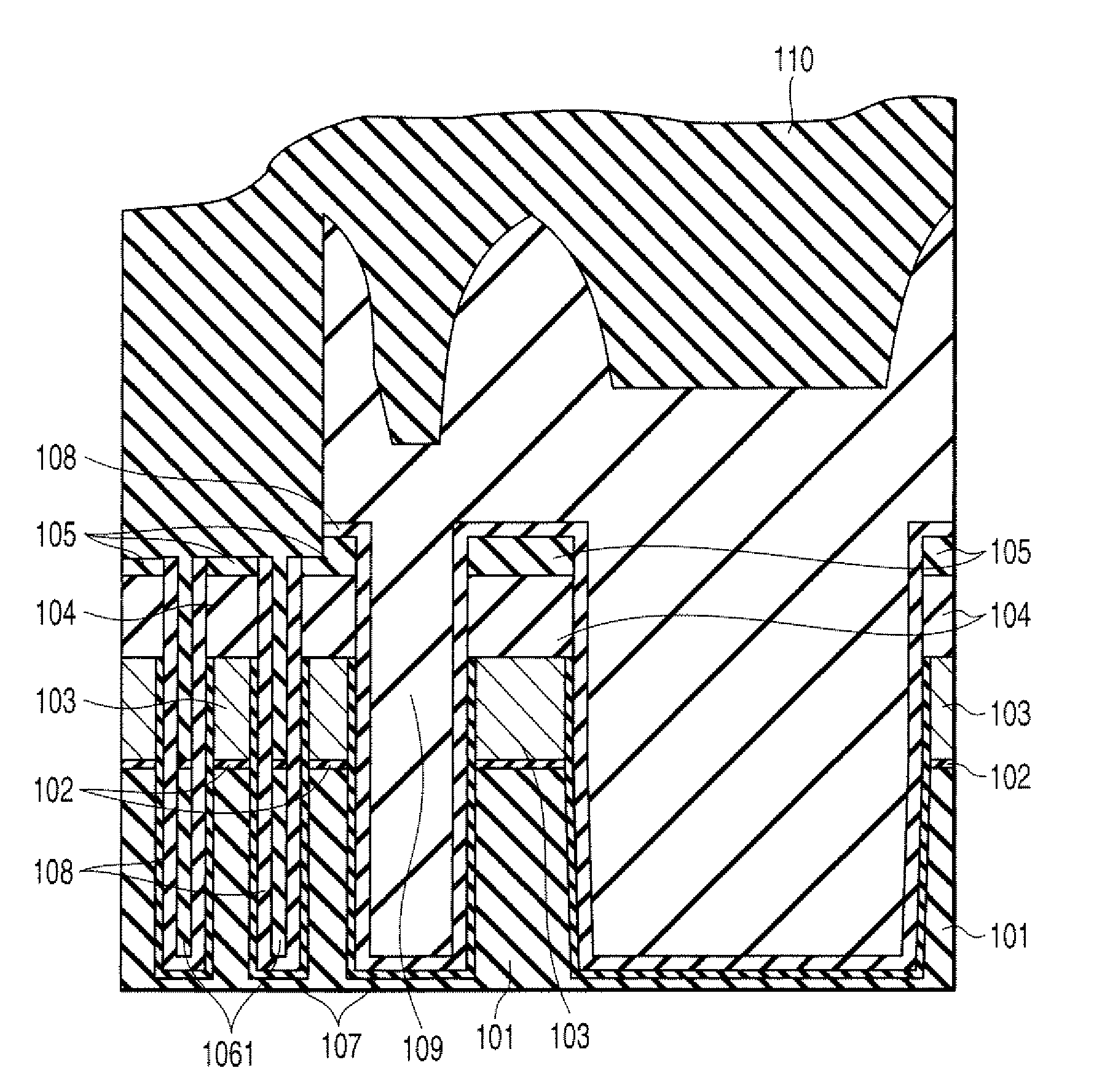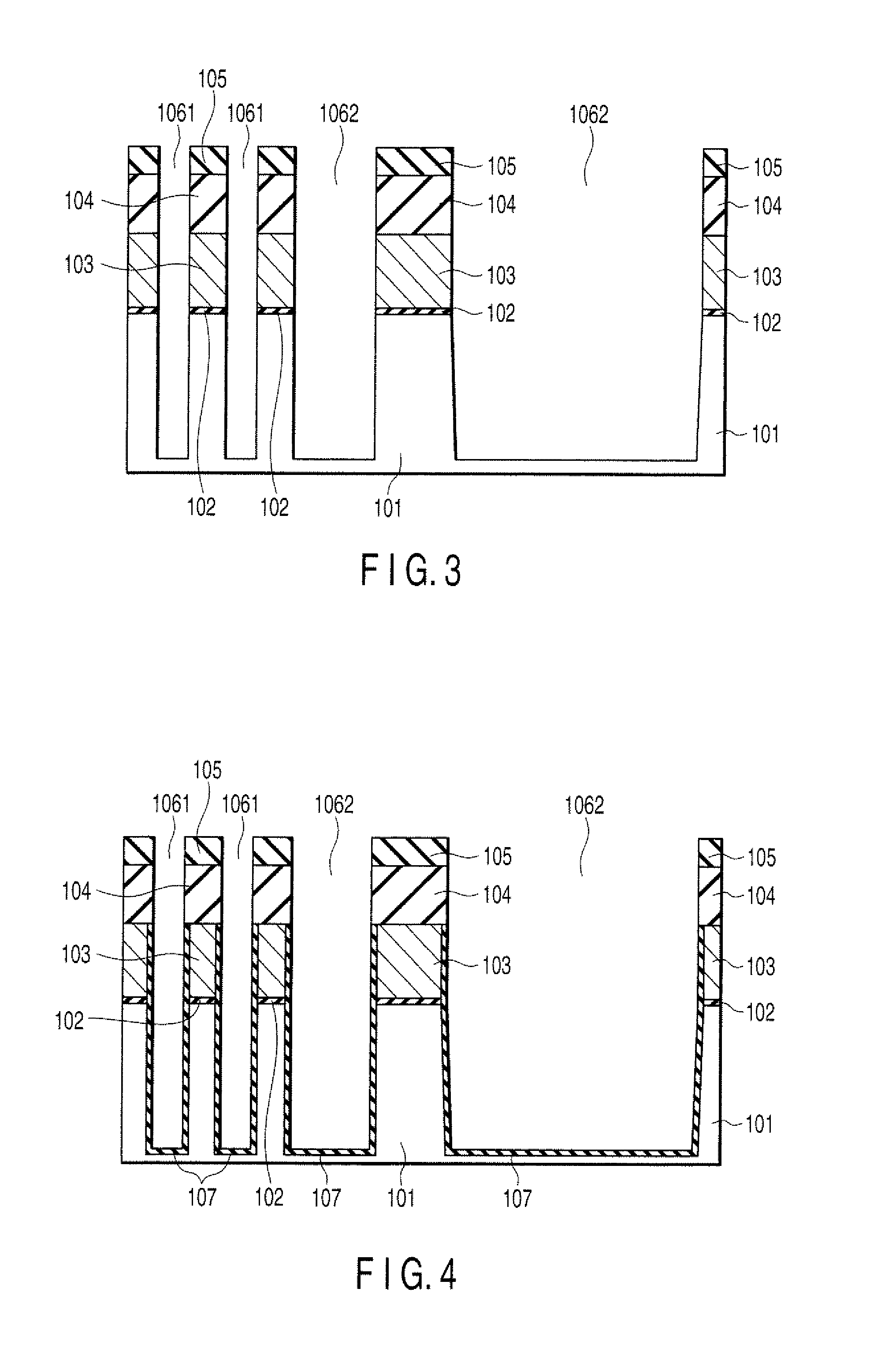Manufacturing method of semiconductor device using sti technique
a manufacturing method and semiconductor technology, applied in semiconductor/solid-state device manufacturing, basic electric elements, electric devices, etc., can solve the problems of increasing the difficulty in increasing the difficulty of downsizing the device, and increasing the difficulty of forming the isolation region
- Summary
- Abstract
- Description
- Claims
- Application Information
AI Technical Summary
Benefits of technology
Problems solved by technology
Method used
Image
Examples
first embodiment
[0103]A manufacturing method of a semiconductor device according to a first embodiment of this invention is explained with reference to FIGS. 1 to 14.
[0104]The present embodiment is one example of a manufacturing method of a flash memory and indicates a case wherein a gate insulating film and a gate electrode film used as floating gates are previously formed on a semiconductor substrate and then STI regions are formed.
[0105]First, as shown in FIG. 1, a silicon thermal oxynitride film 102 used as a gate insulating film is formed to a thickness of approximately 8 nm on a semiconductor substrate 101, a P-doped polysilicon film 103 used as floating gates is formed to a thickness of approximately 120 nm and a silicon nitride film 104 used as a polishing stopper for a chemical mechanical polishing (CMP) process is formed to a thickness of approximately 100 nm. Then, a CVD silicon oxide film 105 used as a mask for reactive ion etching (RIE) is formed on the entire surface of the silicon ni...
second embodiment
[0138]A manufacturing method of a semiconductor device according to a second embodiment of this invention is explained with reference to FIGS. 15 to 30.
[0139]The present embodiment is one example of a manufacturing method of a logic device and, in this case, STI regions are first formed on a semiconductor substrate and then transistors are formed. In the present embodiment, the manufacturing method for realizing an STI structure which is resistant to wet etching in the multi-gate oxide process is shown.
[0140]First, as shown in FIG. 15, a silicon oxide film 202 used as a buffer film is formed to 2 nm on a semiconductor substrate 201 and a silicon nitride film 203 used as a CMP polishing stopper is formed to 100 nm. Then, a CVD silicon oxide film 230 used as a mask for reactive ion etching (RIE) is formed on the entire surface of the silicon nitride film 203 (FIG. 15) and a photoresist film is further coated (not shown).
[0141]Next, the photoresist film is processed by use of the norma...
third embodiment
[0164]A manufacturing method of a semiconductor device according to a third embodiment of this invention is explained with reference to FIGS. 31 to 50.
[0165]The present embodiment is one example of a manufacturing method of a flash memory and, in this case, a gate insulating film and gate electrode film used as floating gates are previously formed on a semiconductor substrate and then STI of the cell portion are formed. After this, a silicon nitride film used as a barrier film which protects the cell portion is formed and then STI regions in a peripheral portion are formed.
[0166]First, as shown in FIG. 31, a silicon thermal oxynitride film 302 used as a gate insulating film is formed to a thickness of approximately 8 nm on a semiconductor substrate 301, a P-doped polysilicon film 303 used as floating gates is formed to a thickness of approximately 120 nm and a silicon nitride film 304 used as a polishing stopper for the CMP process is formed to a thickness of approximately 60 nm. Th...
PUM
 Login to View More
Login to View More Abstract
Description
Claims
Application Information
 Login to View More
Login to View More - R&D
- Intellectual Property
- Life Sciences
- Materials
- Tech Scout
- Unparalleled Data Quality
- Higher Quality Content
- 60% Fewer Hallucinations
Browse by: Latest US Patents, China's latest patents, Technical Efficacy Thesaurus, Application Domain, Technology Topic, Popular Technical Reports.
© 2025 PatSnap. All rights reserved.Legal|Privacy policy|Modern Slavery Act Transparency Statement|Sitemap|About US| Contact US: help@patsnap.com



